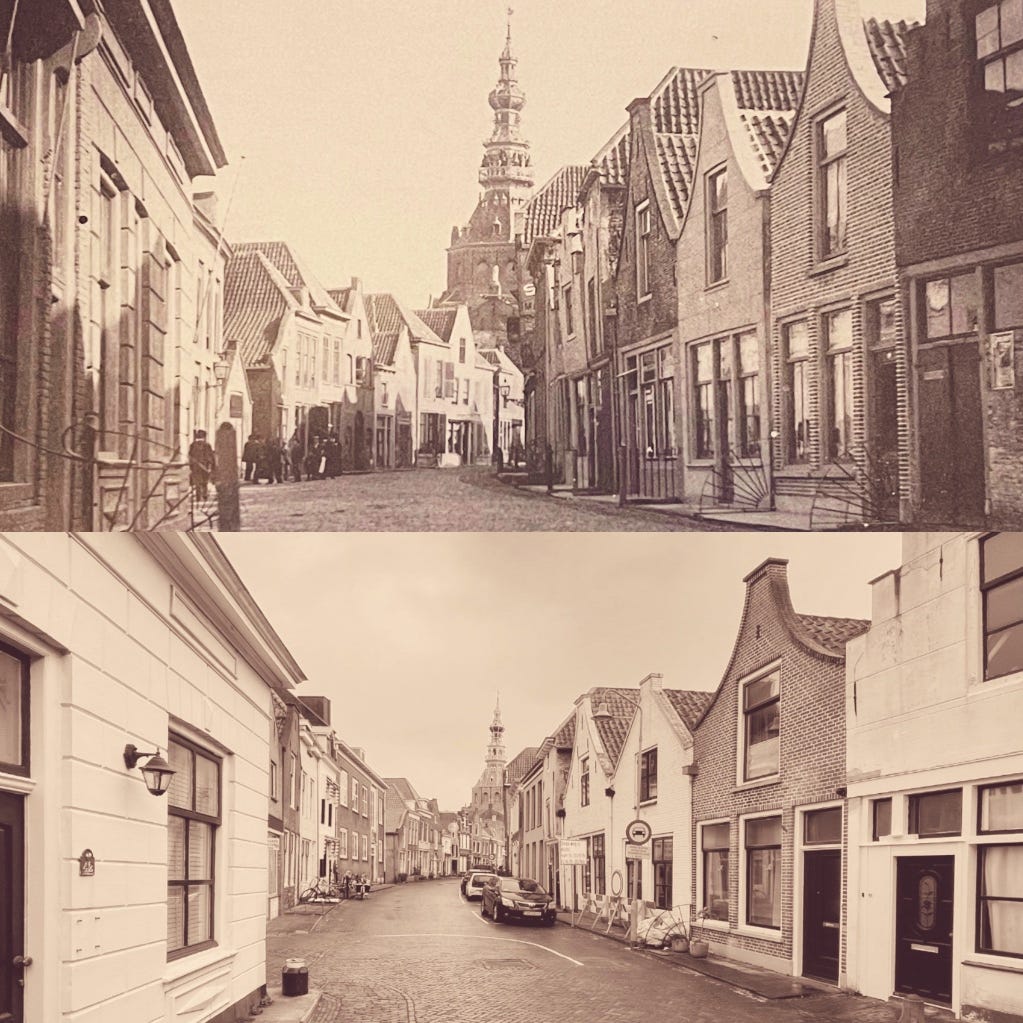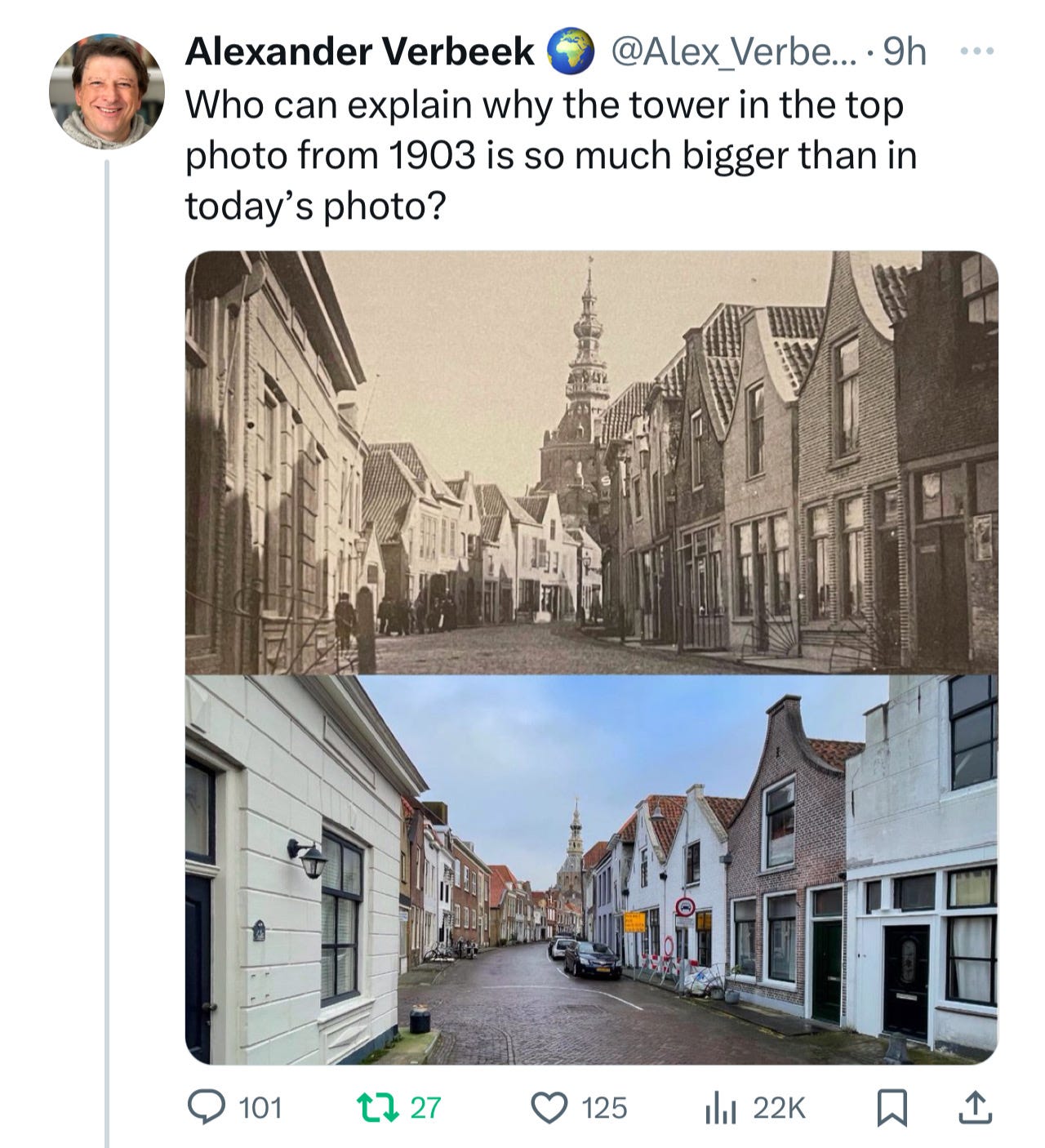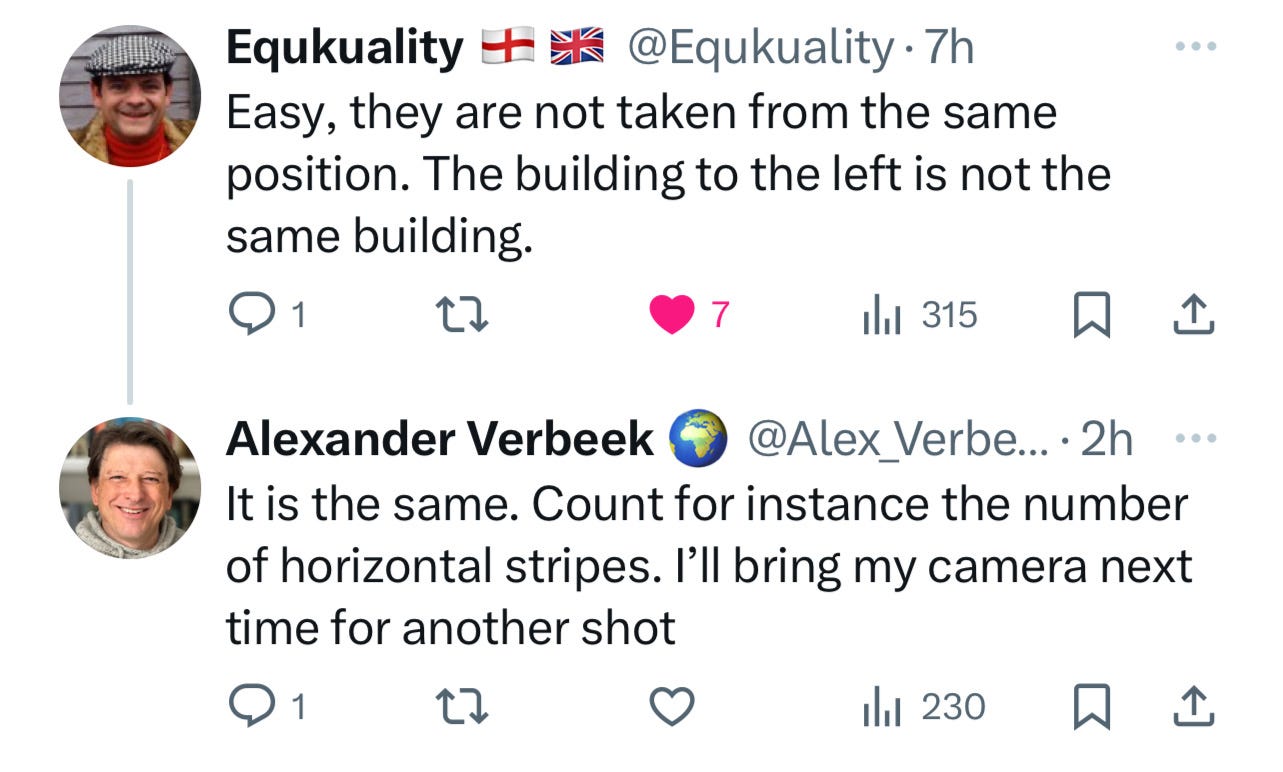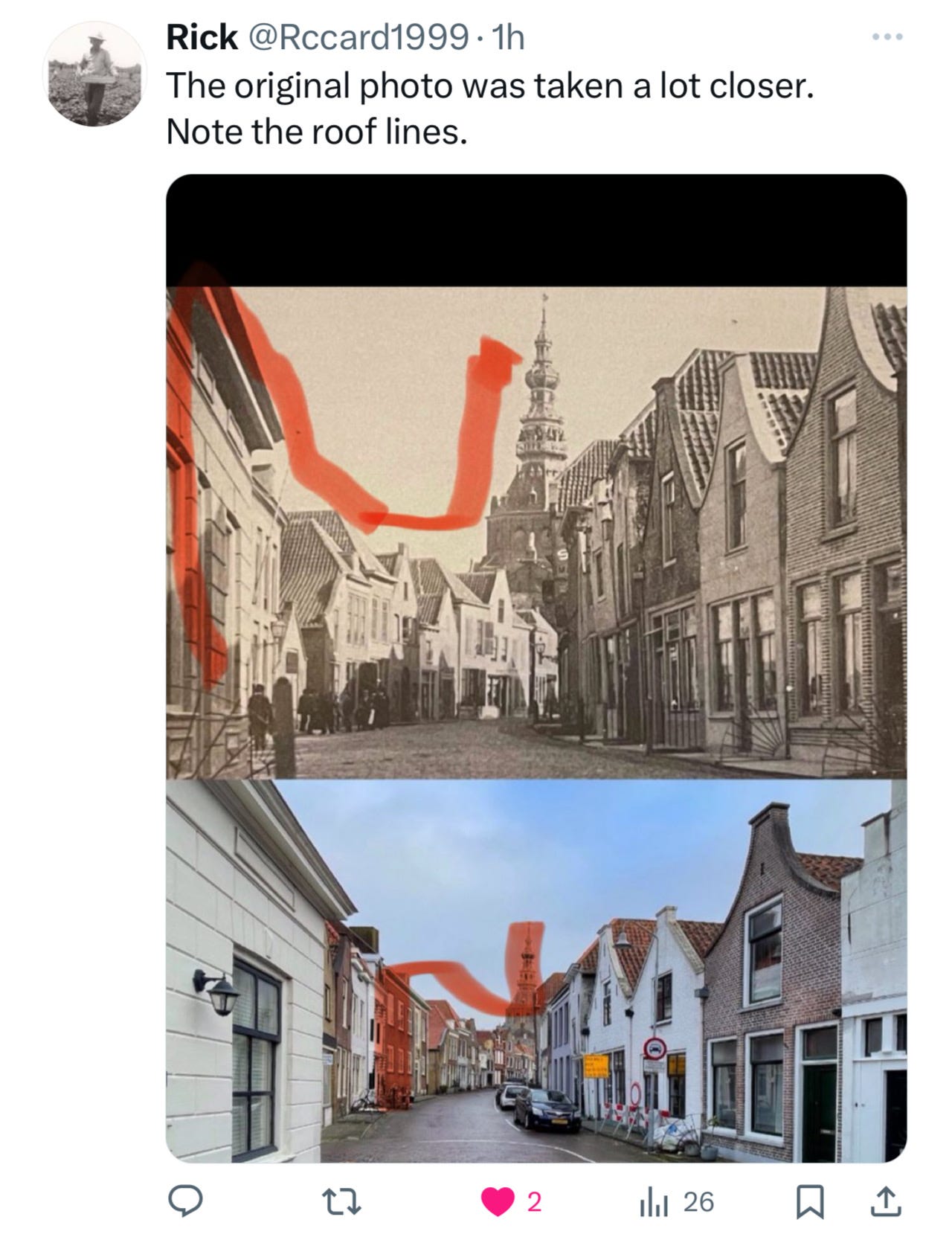Yesterday's post in this newsletter about recreating a photo from 1903 in Zierikzee received many comments on Twitter, some of which are worthy of mentioning here.
But first of all, I made a new version; see the top photo. I have put both images on top of each other, which are now sepia-colored. The bottom is my photo from last week; the cars on the right indicate modern times in an otherwise hardly changed street view.
And second, before going to the comments: The post itself on Twitter was hardly noticed. This results from the policies of Twitter's owner, Elon Musk, who renamed, rebranded, reMAGA-ed, and ruined this once excellent social media platform popular with academics, journalists, and politicians. It's a shadow of what it used to be, but the patient hasn't died yet by lack of an alternative. Any post with a link to a Substack article is kept away from most of the public, a testament to the thriving community it has become (even though banning pro-nazi accounts took longer than it should have taken).
So, to get more attention for the photo, I reposted it without a link to Substack and with a question:
The answer is threefold:
The church looks much smaller in my photo because of the lens I used (an iPhone), which has a different focal length.
I should have bent down to a level where the window sills of the house on the left are at eye level
I should have moved a bit more to the left and -depending on the lens I will use the next time- to the back.
The second and third points are minor; these are differences of maybe half a meter down and maybe one or two meters further to the back. The focal length is the key to explain the differences. Some of the commenters got this right.
Others got it wrong; they said, for instance, that I had walked much too far away from the town hall's tower.
They compared the big roof in my photo on the left in the middle with the same roof in the old photo. Then they assumed that there were no or hardly any houses between the first house on the left and the big roof house and thus concluded that the house on the left was not the same one. The proof of my 'mistake' was the many houses you could see on the left between the first house and the big roof.
Their assumptions are not correct:
It doesn't explain why the houses on the right are a one-on-one match in both photos.
You can't see all those houses on the left in the old photo since the street curves a bit, and the 1903 photographer was a bit closer to the first house than I was (and again, the lens's focal length plays a role). If you count the horizontal stripes on the first house on the left, and look at other details, you can see it is the same house.
I found this remark fascinating:
"Absolutely not taken from the same spot. The grey building halfway down on the right in your shot can not be seen in the original".
After more than 120 years, I compared the many houses on this street in this historic town. Then, this follower claims that rebuilding just one of those houses is "absolute" proof that the photo was not taken from the same spot, even though most others are still clearly recognizable. Imagine this follower's comments when I try this exercise in Shanghai, Dubai, or Las Vegas.
But Twitter-X isn't dead yet, as proved by the humor that is still allowed on the platform:
"The world was smaller back then."
"Wrong wash cycle"
"Photoshopping back in the days"
"Plate tectonics"
"Light traveled faster at the time."
"Over time and due to repeated rain, the church has shrunk."
"In 1903, the buildings in the foreground were still just babies. They're bigger now."
"Can't wait for the conspiracy theorists to arrive." This comment was soon followed by "Aliens" and "The Earth was flatter then."
I'll try to take another photo one of these days when I get back in town. It won't be identical to the 1903 version, but with a proper camera, it will likely better resemble the original.
Iowa Caucus and the Irony of Climate Denial
Well, that's it for tonight and for another weekend post. We'll go back to more serious news in the week to come, where the cult of climate change deniers will have to brave extreme weather at their Iowa caucus. According to the National Weather Service, wind chill may push temperatures to -45 Fahrenheit. That is about minus 43 Celsius. I experienced those temperatures last winter and can quickly agree with the NWS description as "life-threatening."
Keep reading with a 7-day free trial
Subscribe to The Planet to keep reading this post and get 7 days of free access to the full post archives.








